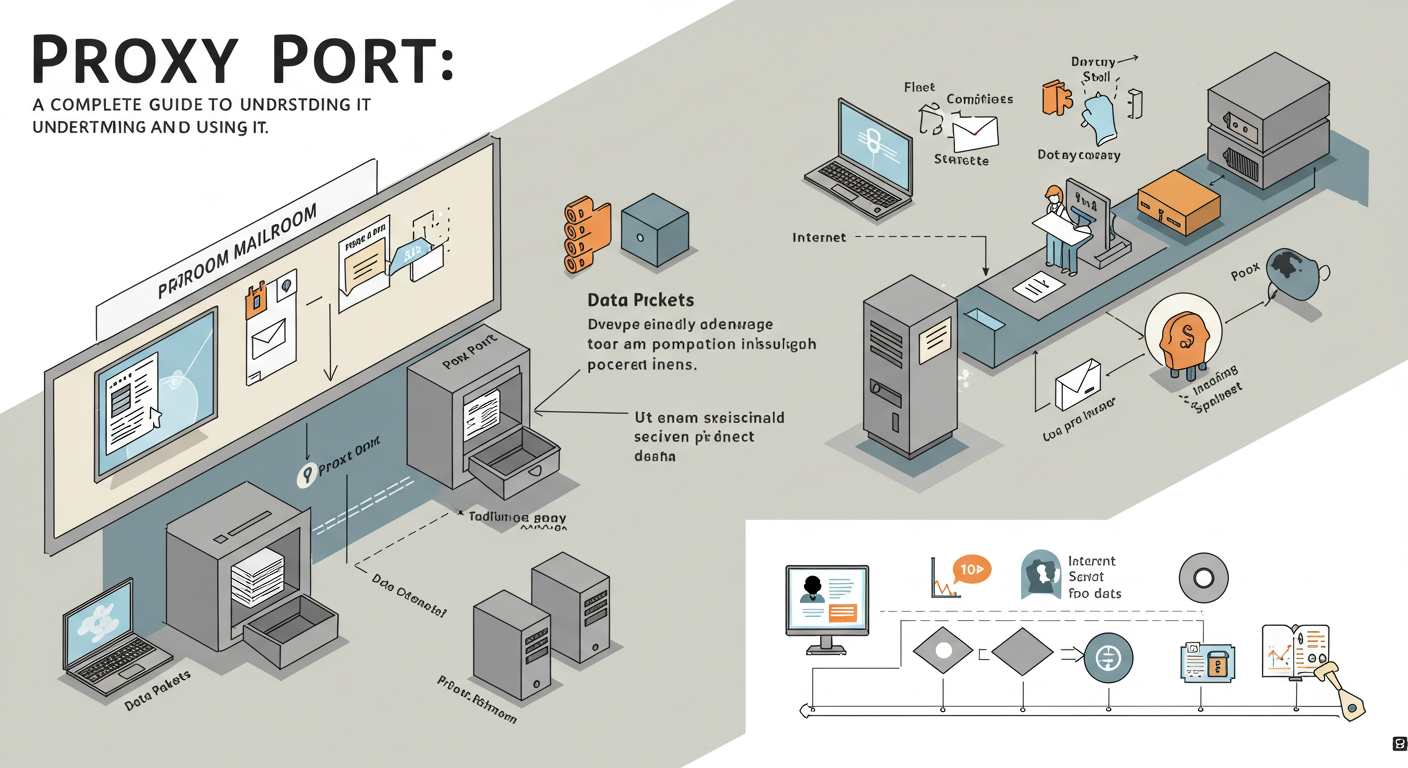In today’s digital world, the terms “proxy” and “proxy port” are becoming increasingly common, especially for those who value online privacy and smooth browsing. A proxy port is essentially the gateway through which internet traffic flows when you connect to a proxy server. It serves as the communication channel that allows data requests to move between your device, the proxy server, and ultimately, the websites or applications you are trying to access.
Understanding proxy port settings is crucial if you want to safeguard your privacy, bypass geo-restrictions, or optimize your internet speed. In this article, we’ll break down what a proxy port is, how it works, why it’s important, and how you can configure it for secure and efficient internet usage.
What is a Proxy Port?
A proxy port is a numbered endpoint that your device uses to communicate with a proxy server. Each port number is tied to a specific protocol or function. For example, port 80 is commonly used for regular HTTP traffic, while port 443 handles HTTPS (secure) traffic. When using a proxy, you configure your device to route traffic through a particular proxy server using a specific port.
Think of the proxy server as a middleman that stands between you and the internet. The proxy port is the door that your requests walk through. Without it, the connection between your device and the proxy server wouldn’t be possible.
How Does a Proxy Port Work?
When you type a website address into your browser, your device sends a request to access that page. Normally, this request goes straight to the website’s server. However, when using a proxy port, your request is rerouted:
-
Your device first sends the request to the proxy server through a designated proxy port.
-
The proxy server processes the request and then forwards it to the destination website.
-
The website responds to the proxy server, which then passes the response back to you through the same port.
This process not only hides your original IP address but can also speed up browsing if the proxy caches frequently visited sites.
Types of Proxy Ports
Not all proxy ports are the same. Different ports serve different purposes, depending on the type of traffic and level of security required. Here are some common proxy ports:
-
Port 80 (HTTP Proxy): Standard web traffic, often used for browsing websites.
-
Port 443 (HTTPS Proxy): Encrypted traffic, ensuring data security.
-
Port 1080 (SOCKS Proxy): Handles all types of traffic including email, file transfers, and P2P sharing.
-
Custom Proxy Ports: Some networks or organizations assign unique ports for specific tasks or restrictions.
Benefits of Using a Proxy Port
Configuring and using a proxy port has several benefits:
1. Enhanced Privacy
Your real IP address is masked, making it difficult for websites, advertisers, or hackers to track your online activity.
2. Access to Restricted Content
By routing through different proxy servers and ports, you can bypass geo-restrictions and access websites or streaming services unavailable in your region.
3. Improved Security
Encrypted such as port 443 ensure your sensitive data, like banking details, remain secure.
4. Faster Browsing
Some proxy servers cache web content. This means frequently visited websites load faster when accessed again.
5. Network Control
Organizations often use proxy ports to monitor or restrict employee internet usage, improving productivity and reducing security risks.
How to Configure a Proxy Port
Setting up a may sound technical, but it’s simpler than most think. Here’s a basic step-by-step:
-
Find Proxy Details: Obtain the proxy server’s IP address and port number from your service provider or network admin.
-
Access Network Settings: On your device, navigate to network or internet settings.
-
Enter Proxy Details: Input the proxy IP and the designated proxy port.
-
Save and Test: Save changes and test the connection by opening a website.
If everything is set up correctly, your traffic will now flow through the proxy port.
Common Issues with Proxy Ports
While are useful, users may encounter challenges:
-
Blocked Ports: Some ISPs or websites block certain ports to prevent proxy usage.
-
Slow Speed: Overloaded proxy servers can slow down browsing.
-
Compatibility Issues: Certain applications may not support all proxy types or ports.
These issues can often be resolved by switching to a different proxy server or port number.
Choosing the Right Proxy Port
When selecting a consider:
-
Security Needs: Use port 443 if encryption is essential.
-
Type of Activity: For browsing, ports 80 or 443 work best, while SOCKS proxies (port 1080) are better for file sharing or streaming.
-
Reliability: Ensure the proxy server and port are not frequently blocked.
Future of Proxy Port Technology
As cyber threats grow and privacy concerns increase, the role of will continue to evolve. With advancements like encrypted tunneling and AI-driven traffic management, proxy ports will remain essential for secure, fast, and unrestricted internet usage.
Conclusion
A is more than just a technical setting—it’s a powerful tool for privacy, security, and unrestricted internet access. By understanding how proxy ports work, their benefits, and how to configure them, users can take full control of their online experience. Whether you’re trying to browse safely, access restricted content, or optimize performance, knowing the right to use is essential in today’s digital landscape.

